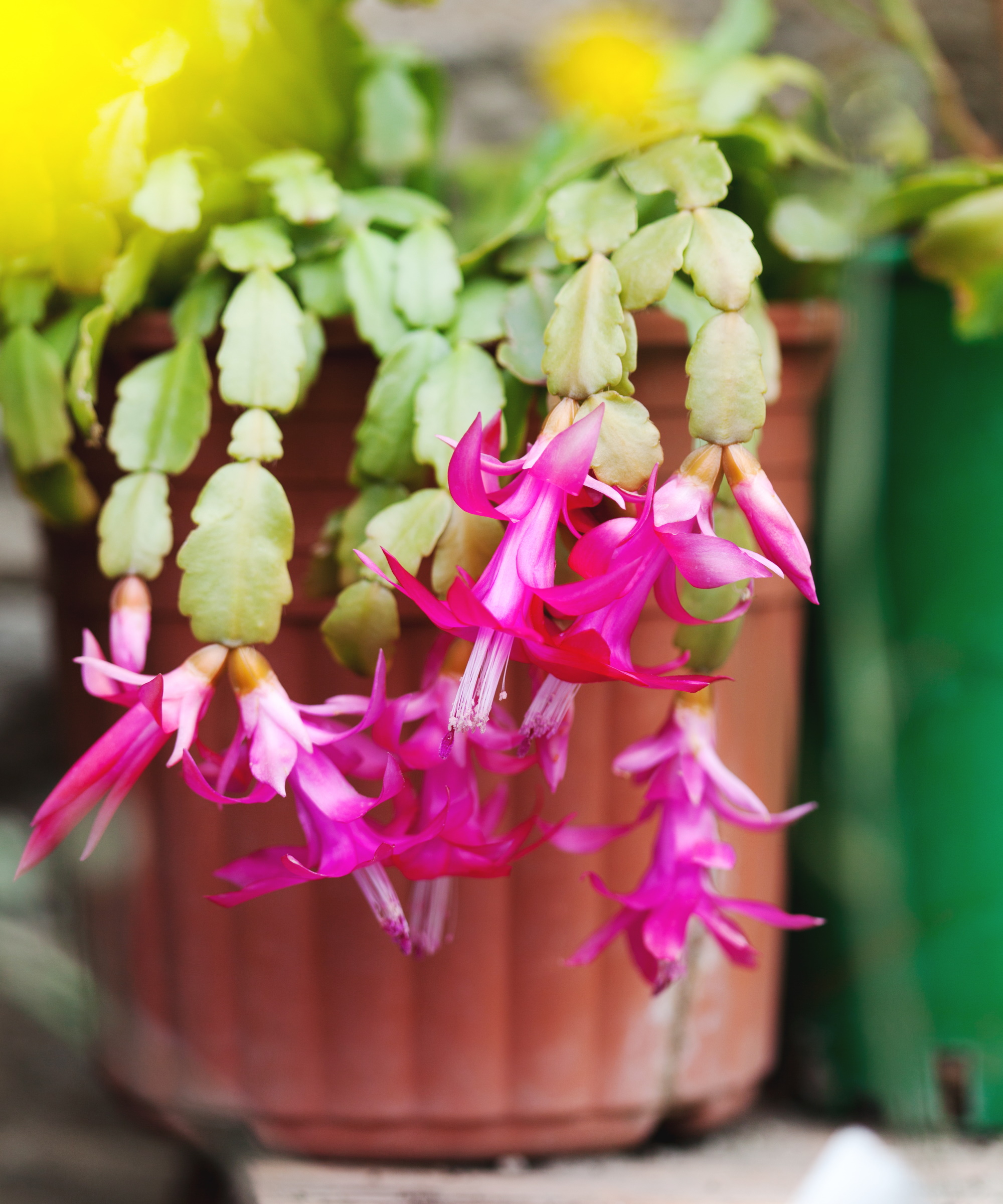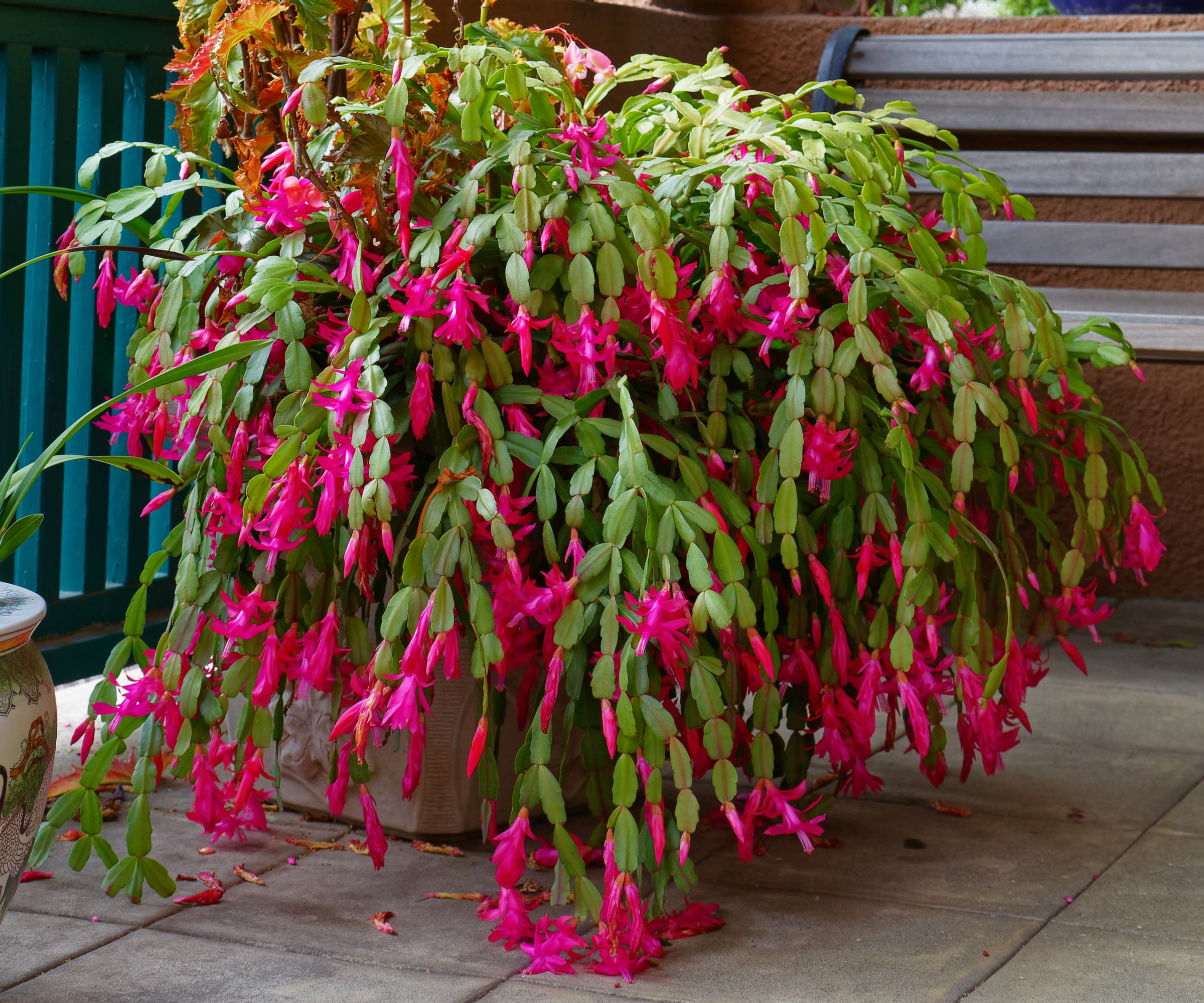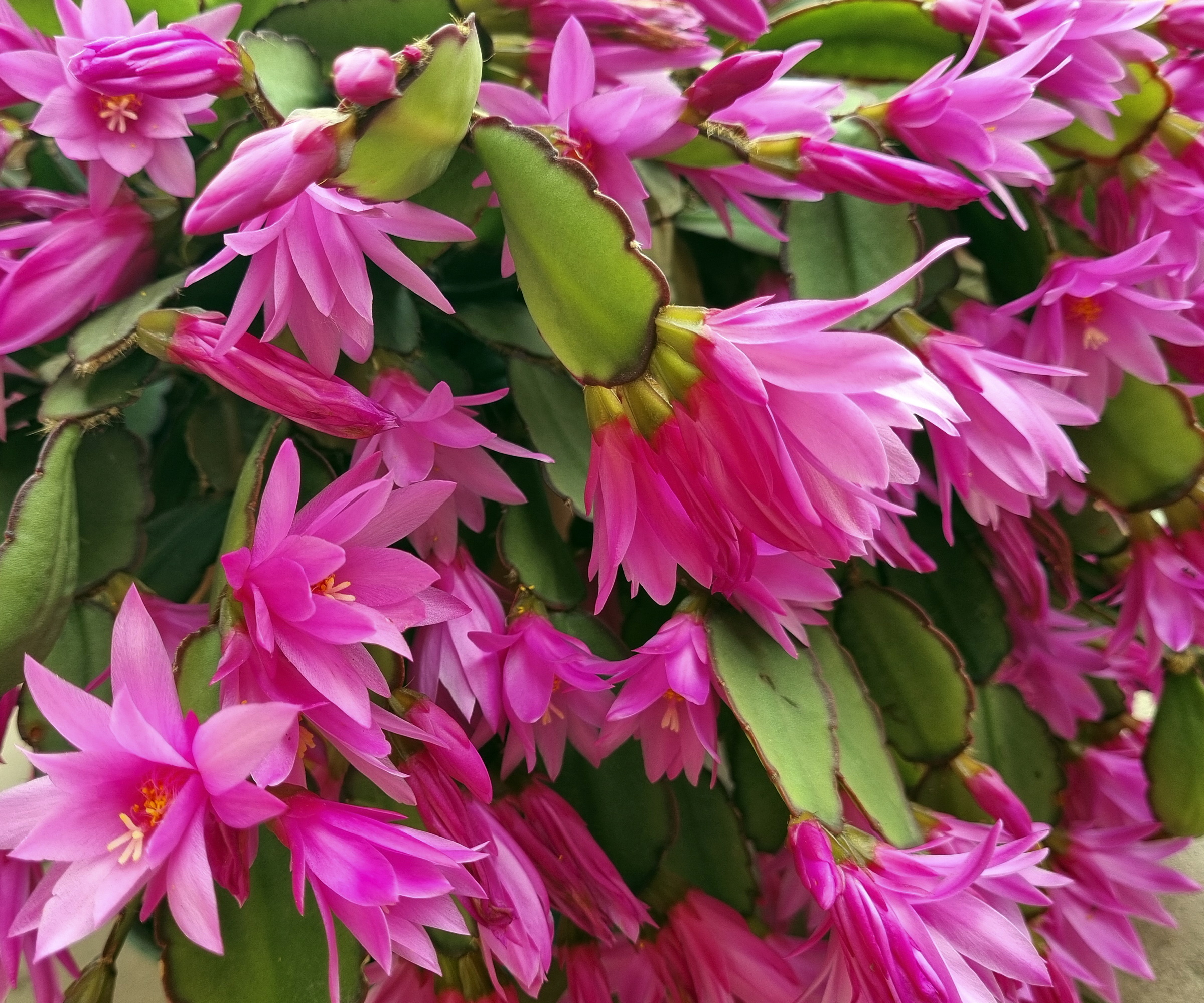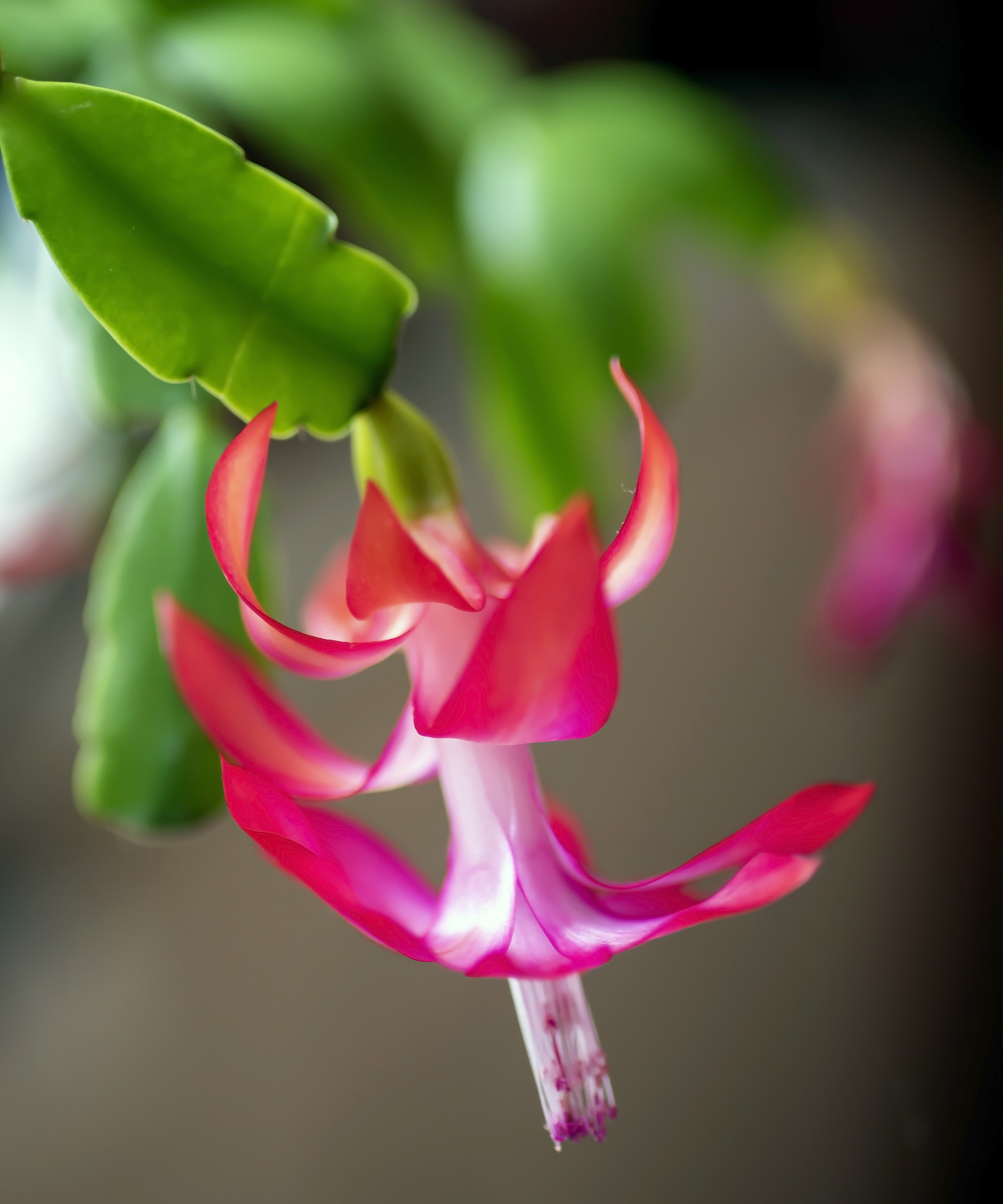How to care for a Christmas cactus – 5 pro tips to keep these festive succulents healthy and blooming for longer
With this advice your Christmas will stay healthy year-round, not just over the festive season


Ruth Doherty
Though caring for Christmas cactus is relatively easy, it is picky about how and where it's grown if you want it to stay healthy and flower at the right time. With its pretty tendrils and colorful flower drops, the Christmas cactus is an attractive plant that adds vibrancy and prettiness to a festive display.
Also known as Schlumbergera, the Christmas cactus earned its name because it flowers during the festive season. If you want to make a Christmas cactus bloom at the right time of year, it's important to learn how to care for a Christmas cactus properly to get the most from this attractive succulent. You can also grow Thanksgiving cactus which has a similar appearance with minute differences, and a differing blooming period.
Here, we've compiled everything you need to know about growing and caring for a Christmas cactus so you can keep yours healthy and happy all year round.

5 expert tips for Christmas cactus care
It can be easy to confuse a Thanksgiving cactus and Christmas cactus. If your indoor plant has scalloped leaf edges, rather than forked, and it flowers during the Christmas period, you have a Christmas cactus.
But, you don't have to be limited to only enjoying it at this time of year. With these expert tips you can grow a Christmas cactus that thrives throughout the year.
1. Keep your Christmas cactus out of direct sunlight

Like orchids, the Christmas cactus is an epiphyte, growing below a canopy of trees on the trunk of plants rather than in soil in its natural habitat. As a result, these plants grow best in dappled sunlight. Other cacti and succulents tend to prefer plenty of direct sunlight, but Christmas cactus is tolerant to shadier spots and may suffer from leaf scorch if left in a sunny spot.
'Mine do just fine in a room that gets mostly indirect light from a north window, with some sun from east and west windows,' says horticulture expert Carol Michel. 'I never do anything special in the fall as far as making sure to leave my Christmas cactus in a certain amount of darkness, and they bloom consistently every year.'
Design expertise in your inbox – from inspiring decorating ideas and beautiful celebrity homes to practical gardening advice and shopping round-ups.
You can treat the Christmas cactus as an indoor low-light plant, but it is important to provide it with sufficient lighting during its growing period if you want it to bloom in time for the festive season. Try using this grow light for plants from Amazon if you need to boost its light levels during the darker months.

Carol J. Michel has a horticulture degree from Purdue University and is an award-winning author and podcaster.
2. Keep your Christmas cactus warm

If your Christmas cactus isn't blooming, it might be because it is in a spot that is too cold. Like other indoor flowering plants, it's important to provide your Christmas cactus with sufficient warmth for buds to form.
'Keep the temperature above 70ºF in the daytime and from 55 to 65ºF at night,' says Tammy Sons, horticulturist and CEO of TN Nurseries.
Christmas cactus isn't among the most cold-tolerant houseplants, so it's best to monitor room temperatures with this room thermometer from Amazon.

Tammy Sons is a horticulture plant expert, garden writer, and educator. Tammy is the CEO and founder of TN Nursery, a thriving online plant nursery based in Altamont, Tennessee. She is also a prolific writer, sharing her knowledge through articles on various gardening topics, including plant care, sustainable landscaping, and the latest trends in horticulture.
3. Use well-draining potting mix for your Christmas cactus

One of the biggest indoor plant mistakes is not using the right potting soil for indoor plants. The truth is, there is a whole range of potting mix combinations you can use for different plants. For a Christmas cactus, you need to ensure the potting mix is well-draining.
'A sandy soil works well,' notes Tammy. Loose mixtures, such as with sand or fine bark, work best for these plants. It allows excess water to drain away, reducing the likelihood of the cactus suffering houseplant root rot. This succulent potting mix from Amazon works well for these plants.
'I also grow them in shallow pots because they don't have extensive root systems,' notes Carol.
4. Take care not to overwater your Christmas cactus

When you have a large collection of indoor plants, it can take some time to master the skill of watering your houseplants correctly. Overwatering is a common succulent mistake, as these plants don't require lots of water.
'Water only when the soil is completely dry. Over or underwatering can lead to root rot or Christmas cactus leaves turning limp,' says Tammy.
To avoid making the Christmas cactus mistake of overwatering, use this moisture meter from Amazon to monitor when it's time to water your Christmas cactus.
5. Fertilize your Christmas cactus in spring and summer

It can be helpful to fertilize your Christmas cactus ahead of its blooming period when it is actively growing in the warmer months.
Christmas cactus should only be fertilized during the late spring and summer months. This allows for a bit of new growth and for the plant to store energy for the winter blooming season. Use a high quality all-purpose indoor plant fertilizer, and not one intended for succulents or true cacti plants.
The best kind of fertilizer to give a Christmas cactus is a liquid feed that is high in potash. Miracle-Gro's Indoor Plant Food, available from Amazon would be an ideal choice.
Aim to feed your Christmas cactus once a month during spring and summer. This will nourish the soil and prepare it for flower growth in winter.
Once September comes around, you can stop fertilizing Christmas cactus, and give them a period of reduced natural light, no water and cooler temperatures to prompt them to flower again for Christmas.
Of course, there are some key fertilizing mistakes to avoid. Oversaturating the soil with fertilizer can cause root rot, and root burn and result in Christmas cactus buds falling off, among other issues.
Repotting a Christmas cactus can happen in spring, once flowering season is over, and this is when you can start to fertilize the plant, too. Propagating a Christmas cactus can be done at the same time.
Originating from the mountains of southeast Brazil, these cacti, with their distinctive and sturdy leaf-like stems, actually prefer semi shady and humid environments – this will encourage strong and healthy growth, too.
FAQs
Do Christmas cactus plants need high humidity levels?
As a tropical indoor plant, Christmas cactus prefers to grow in higher humidity levels. Luckily, there are plenty of ways to increase humidity for indoor plants - from misting to using this pebble tray from Amazon. It's best to keep humidity levels up if you want to see your Christmas cactus bloom with vibrant flowers year after year.
When is Christmas cactus' growing season?
The Christmas cactus' growing season is, you may be surprised to find, between April and September. It is during this time that you should look to repot Christmas cactus and to fertilize Christmas cactus.
Can a Christmas cactus grow outside?
A Christmas cactus can survive happily outside in the warmer climates of US hardiness zone 10-12. However, if temperatures drop to freezing point, or if there is a long spell of dry heat, the plant won't tolerate it. Christmas cactus, like many other plants, doesn't enjoy extremes, so aim to keep the conditions humid and the temperature between 60-70ºF, and only allow it to become cooler when you are prepping the plant for blooming again. Remember too that to force blooming, it needs to be kept in the dark for the majority of the day; six hours of daylight will be enough.
Signs that your Christmas cactus is healthy are plump green leaves and plenty of blooms. It's easy to spot, though when it is unhealthy. Look out for wrinkled, puckered leaves, a sign of under-watering, or leaves that are brown, or dotted with black or red spots, which could be a sign of over-watering.
Make sure to prune your Christmas cactus to remove damaged plant material and encourage returning blooms next year. If your plant is growing well and is healthy, try propagating your Christmas cactus from a cutting.

Tenielle is a Gardens Content Editor at Homes & Gardens. She holds a qualification in MA Magazine Journalism and has over six years of journalistic experience. Before coming to Homes & Gardens, Tenielle was in the editorial department at the Royal Horticultural Society and worked on The Garden magazine. As our in-house houseplant expert, Tenielle writes on a range of solutions to houseplant problems, as well as other 'how to' guides, inspiring garden projects, and the latest gardening news. When she isn't writing, Tenielle can be found propagating her ever-growing collection of indoor plants, helping others overcome common houseplant pests and diseases, volunteering at a local gardening club, and attending gardening workshops, like a composting masterclass.
- Ruth DohertyContributing Editor